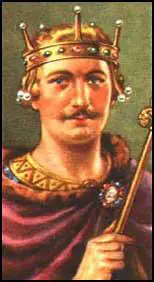
It has been argued that his death was an assassination plot by his brother Henry, who not long after his older brother’s death, raced to be crowned king before anyone could contest him. On a hunting expedition in the New Forest with his brother Henry and numerous others, an arrow pierced William’s chest and entered his lungs. The last event that William II’s reign is remembered for is nearly as well discussed as his supposed homosexuality: his death. This control came through the long-held Norman tradition of castle building, for instance the construction of the castle at Carlisle in 1092 brought the previous Scottish territories of Westmoreland and Cumberland under English lordship. These victories were a particularly good result for William it threw Scotland into a succession dispute and disarray, allowing him to assert control on a previously fractured and problematic region. Later in 1093 an army sent by William, under the command of the later imprisoned de Mowbray successfully defeated Malcolm at the Battle of Alnwick this resulted in the death of Malcolm and his son Edward. Malcolm III, King of Scotland invaded William’s kingdom on numerous occasions, most notably in 1091 when he was soundly defeated by William’s forces, forced to offer homage to William and to acknowledge him as overlord. William also effectively brought to heel a Scottish kingdom that was constantly hostile towards him. William raised an army and took to the field he successfully routed de Mowbray’s forces and imprisoned him, seizing his lands and estates. In 1095, the Earl of Northumbria, Robert de Mowbray rose in rebellion and refused to attend a meeting of nobles. He was a consummate tactician and military leader who understood the importance of having loyalty from his army, Norman lords undoubtedly having a propensity for uprisings and rebellions! Whilst he could not successfully contain the secular ambitions of his nobles, he did use force to keep them in line. Where William lacked respect and support from the Church, he most certainly had it from the army. Anselm’s self exile left the revenues of the Archbishop of Canterbury vacant William was thus able to claim these funds until the end of his reign. This presented William with an opportunity, one that he gratefully seized. Urban negotiated and the issue was resolved with William, but Anselm remained in exile until the end of William’s reign in 1100. In particular, relations were poor with the new Archbishop of Canterbury, Anselm, who felt so aggrieved at William’s rule he eventually fled into exile and sought the help and advice of Pope Urban II in 1097.

William II had a fractured relationship with the Church as he often kept bishop’s positions empty, allowing him to appropriate their incomes. These accusations of sodomy would however have been particularly beneficial to a Church that was deeply angered and upset by William’s rule. The debate about Williams’s sexuality is all in all a futile one, with little evidence to support either side of the discussion. That being said, there is little or no evidence to suggest that Flambard was homosexual, other than the musings that he spent lots of time with William and that William surrounded himself with ‘attractive’ men. His most frequent advisor and friend Ranulf Flambard, appointed Bishop of Durham in 1099, was often implicated as being William’s most obvious and regular sexual partner.

It has been a frequent area of contention, with some suggesting he was homosexual as there was no indication that he was impotent or infertile. This led to many at the time and more recently bringing into question his sexuality. The most well known discussions about William Rufus surround his sexuality he never married and never produced any heirs, legitimate or illegitimate. Yet, the life and tribulations of his chosen successor, favoured son and namesake William II have remained relatively ignored. Histories of Norman England are more often than not focused on William I, better known as the Conqueror, or his youngest son, who later became Henry I.


 0 kommentar(er)
0 kommentar(er)
